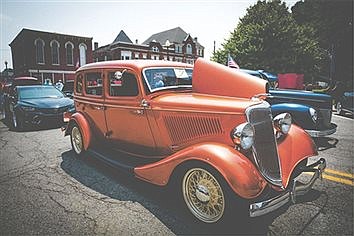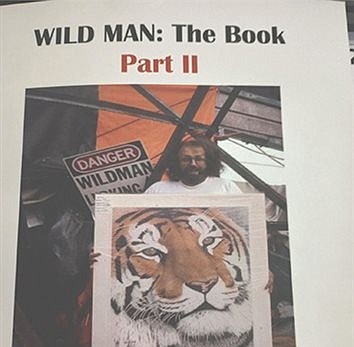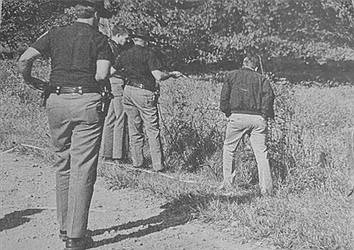Unsung Heroes of the Underground Railroad: The Story of William Beard
September 5, 2024 at 12:49 p.m.

September is designated International Underground Railroad Month to recognize and celebrate the contributions of freedom seekers and those who assisted them in their journey to liberation. It is well known that Levi Coffin, who had an Underground Railroad Station in Newport, now known as Fountain City, played a significant role in helping slaves reach freedom. However, it is less well known his cousin William Beard, of Salem in Union County, was just as active as Levi Coffin in Newport.
Beard, originally from Guilford County, North Carolina, was one of the first to enlist in the anti-slavery cause and was twice chosen as an agent to solicit aid for the organization in the eastern states. According to the Henry County Female Anti-Slavery Society minutes, Beard was so active that the women of the anti-slavery Society took up donations to buy 127 yards of free-labor cotton in order to sew garments: vests, coats, pants, dresses, shirts, and socks. Two-thirds of the garments were directed to Salem, Union County, care Beard.
One of the Underground Railroad routes passed through Union County near Salem, where the William Beard home, an underground railroad station, is located. This route was strategically chosen, as it was well-known that Quakers, also known as the Society of Friends, were some of the most active supporters of the Underground Railroad. As strict abolitionists, they came to Indiana as early as 1812. They were entrenched by 1820, though more in Fayette and Union counties, northward to Wayne County, where they were extremely influential. However, being an abolitionist led to some division at the Salem Church in Union County. Despite the overall Quaker belief that slavery was wrong, there were members who felt that breaking the law was unacceptable. This disagreement ultimately caused a split in the church.
According to the McHenry Museum and Historical Society in Modesto, California, Beard would arrive in Cincinnati in a covered wagon with a false bottom thought to contain produce, hogs or cattle. When he had sold his goods, he would park his wagon at Coffin’s other home in Cincinnati and, during the night, load it with fugitive slaves to take to the Beard farm, the next station in the Underground Railroad.
The Beard home, located on Salem Rd., was built with lumber coming from trees on the farm and bricks being made on-site. Steve and Vicky Logue currently own the home that has been in the Logue family for 104 years. Although the house is over 200 years old, Steve shared remnants of the Underground Railroad remain. There is a staircase leading to the third floor that, at one time, was hidden by a dumb waiter. Once on the third floor, there were windows on each end of the small area, which allowed a mile view to the north and south to ensure it was clear for slaves to move on to the next station. Also, a trap door leads to the home’s roof on the third floor. Steve believes if slaves needed to escape, they could use the trap door to access the roof, which had a small drop to the roof of the summer kitchen. From there, they could jump to the ground to escape.
In 1849, according to a diary penned by Beard’s son, Elihu Beard, it was revealed that his parents would occasionally entertain bounty hunters for dinner on the first floor while concealing slaves on the third floor of their home.
It is believed Beard forwarded approximately 2,000 slaves to the Levi Coffin House, who then facilitated their escape to Canada. Beard also made several trips to Canada to distribute clothing among the fugitives.
Another notable figure from Union County who assisted in the transportation of freedom seekers was Peter Napper, an African American man familiar to escaped slaves, who operated the first station in Union County. He resided in a log cabin on a farm near Roseburg. Also, Union County resident Joel Haworth’s home was a station on the Underground Railroad for a number of years. In Levi Coffin’s “Reminiscences of Levi Coffin, the Reputed President of the Underground Railroad,” published in 1876, Joel’s activity of giving safe harbor to runaway slaves was noted in a chapter devoted entirely to the escape of a woman named Ellen and her husband, Louis. This event occurred in the year 1847 or later. The book states: “It was thought safer for Louis and Ellen to go out of the city (Cincinnati), and a few evenings afterward, they were conveyed to the house of Joel Haworth, a well-known abolitionist living in Union County, Indiana. Here they remained several weeks, awaiting results.”
In the book, “The Underground Railroad: From Slavery to Freedom,” written by Wilbur Siebert in 1898, the following community members were also listed for their efforts of the Underground Railroad including Dr. Casterline, J.P. Elliot, Edwin
Gardner, Wm Huddleston, John Maxwell and Gabriel Smith.
Latest News
E-Editions
Events
September is designated International Underground Railroad Month to recognize and celebrate the contributions of freedom seekers and those who assisted them in their journey to liberation. It is well known that Levi Coffin, who had an Underground Railroad Station in Newport, now known as Fountain City, played a significant role in helping slaves reach freedom. However, it is less well known his cousin William Beard, of Salem in Union County, was just as active as Levi Coffin in Newport.
Beard, originally from Guilford County, North Carolina, was one of the first to enlist in the anti-slavery cause and was twice chosen as an agent to solicit aid for the organization in the eastern states. According to the Henry County Female Anti-Slavery Society minutes, Beard was so active that the women of the anti-slavery Society took up donations to buy 127 yards of free-labor cotton in order to sew garments: vests, coats, pants, dresses, shirts, and socks. Two-thirds of the garments were directed to Salem, Union County, care Beard.
One of the Underground Railroad routes passed through Union County near Salem, where the William Beard home, an underground railroad station, is located. This route was strategically chosen, as it was well-known that Quakers, also known as the Society of Friends, were some of the most active supporters of the Underground Railroad. As strict abolitionists, they came to Indiana as early as 1812. They were entrenched by 1820, though more in Fayette and Union counties, northward to Wayne County, where they were extremely influential. However, being an abolitionist led to some division at the Salem Church in Union County. Despite the overall Quaker belief that slavery was wrong, there were members who felt that breaking the law was unacceptable. This disagreement ultimately caused a split in the church.
According to the McHenry Museum and Historical Society in Modesto, California, Beard would arrive in Cincinnati in a covered wagon with a false bottom thought to contain produce, hogs or cattle. When he had sold his goods, he would park his wagon at Coffin’s other home in Cincinnati and, during the night, load it with fugitive slaves to take to the Beard farm, the next station in the Underground Railroad.
The Beard home, located on Salem Rd., was built with lumber coming from trees on the farm and bricks being made on-site. Steve and Vicky Logue currently own the home that has been in the Logue family for 104 years. Although the house is over 200 years old, Steve shared remnants of the Underground Railroad remain. There is a staircase leading to the third floor that, at one time, was hidden by a dumb waiter. Once on the third floor, there were windows on each end of the small area, which allowed a mile view to the north and south to ensure it was clear for slaves to move on to the next station. Also, a trap door leads to the home’s roof on the third floor. Steve believes if slaves needed to escape, they could use the trap door to access the roof, which had a small drop to the roof of the summer kitchen. From there, they could jump to the ground to escape.
In 1849, according to a diary penned by Beard’s son, Elihu Beard, it was revealed that his parents would occasionally entertain bounty hunters for dinner on the first floor while concealing slaves on the third floor of their home.
It is believed Beard forwarded approximately 2,000 slaves to the Levi Coffin House, who then facilitated their escape to Canada. Beard also made several trips to Canada to distribute clothing among the fugitives.
Another notable figure from Union County who assisted in the transportation of freedom seekers was Peter Napper, an African American man familiar to escaped slaves, who operated the first station in Union County. He resided in a log cabin on a farm near Roseburg. Also, Union County resident Joel Haworth’s home was a station on the Underground Railroad for a number of years. In Levi Coffin’s “Reminiscences of Levi Coffin, the Reputed President of the Underground Railroad,” published in 1876, Joel’s activity of giving safe harbor to runaway slaves was noted in a chapter devoted entirely to the escape of a woman named Ellen and her husband, Louis. This event occurred in the year 1847 or later. The book states: “It was thought safer for Louis and Ellen to go out of the city (Cincinnati), and a few evenings afterward, they were conveyed to the house of Joel Haworth, a well-known abolitionist living in Union County, Indiana. Here they remained several weeks, awaiting results.”
In the book, “The Underground Railroad: From Slavery to Freedom,” written by Wilbur Siebert in 1898, the following community members were also listed for their efforts of the Underground Railroad including Dr. Casterline, J.P. Elliot, Edwin
Gardner, Wm Huddleston, John Maxwell and Gabriel Smith.





